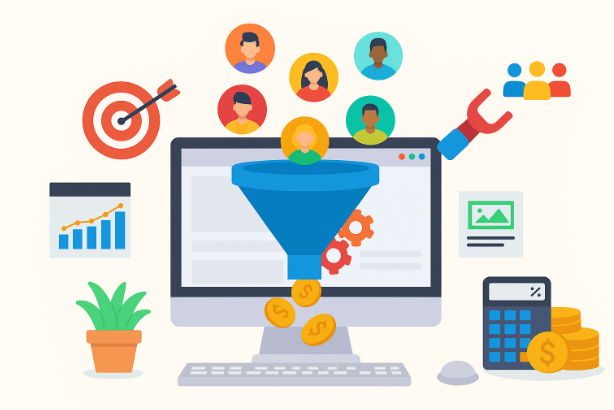Advice from your Digital Specialist
- Nolan Zimmer

- Jul 24, 2025
- 5 min read
A successful digital marketing campaign goes beyond simply activating ads and hoping for the best. It demands meticulous planning and thoughtful execution to maximize your return on investment. The following key questions are crucial for marketers to consider before initiating a campaign.

Q: How do you define the right campaign objective? Any common mistakes to avoid?
The right campaign objective should always align with your business goals, not just vanity metrics. Start by asking: What do we want to achieve with this campaign? Is it ticket sales? Donations? Brand awareness? Lead generation?
Once your goal is clear, choose the platform objective that best supports it. For example:
For awareness: Reach or Impressions can maximize visibility.
For conversions: Sales, Purchases, or Leads are more appropriate.
For engagement: Video Views, Engagement, or Traffic might fit better.
A common mistake is selecting an objective that doesn’t match the desired outcome. For instance, running an awareness campaign but expecting direct sales. Another pitfall is splitting your focus between too many objectives at once, which can dilute your efforts and confuse the platform's algorithm. Be specific and realistic about what success looks like, and make sure your KPIs reflect your objective.
Q: Should budgets be spent evenly, or weighted at the start or end? What factors influence that decision?
Whether you spend your budget evenly, weighted at the start or end, depends on the campaign but budget size also plays a big role.
Campaign strategy, along with budget size, dictates whether to allocate funds evenly or prioritize the beginning or end of the campaign.
For example, if you have a budget of $1,000, trying to stretch it across a long, multi-week flight (like 6 weeks) can dilute your impact. In that case, it’s often better to concentrate your spend over a shorter period, where you can reach your audience with enough frequency to make an impact.

As a general rule of thumb:
Front-loading works well if you want to quickly gather learnings to optimize later.
Even pacing is good for awareness, maintaining top of mind or a steady presence.
Back-loading can make sense if you expect engagement to peak closer to an event or deadline.
Always make sure your budget aligns with your campaign length and audience size — don’t spread yourself so thin that your ads don’t get seen often enough to be effective.
In most cases, when working with a conservative budget, it’s best to use even pacing over a flight schedule that’s realistic for the budget and audience size. This approach allows you to remain competitive in the auction and maintain consistent visibility.
Q: How do you recommend approaching audience targeting? When should clients use their own data vs. platform data?
Start with your first-party data such as email lists, CRM contacts, and website visitors for retargeting since these audiences already know you.
To reach new people, use lookalikes of your best customers along with platform data like interests, behaviors, and demographics. Avoid being too narrow (which limits reach) or too broad (which wastes budget).
Rule of thumb:
Use first-party data for retargeting and conversions.
Use lookalikes and platform audiences for prospecting and awareness.
Monitor results and adjust by focusing on what works and testing new segments to grow your reach.
Q: What’s your guidance for testing creative, audience, or messaging? How much should a client test at once?
When running campaigns, it’s important to test a variety of creative formats to determine which resonates best with your audience. Since each audience responds differently, a proven strategy is to provide multiple creative types and let Meta’s algorithm optimize for the highest-performing assets—especially if your goal is conversions. Creative formats can include graphics, videos, images, carousels, and slideshows.
When testing creatives, the number of assets included should align with the campaign’s budget and duration. A budget that’s too low can limit the algorithm’s ability to effectively learn which creatives drive better results. For example, in a $1,000 campaign running over one month, it’s best to limit testing to 1-3 creatives. Any more, and the platform may not have sufficient budget to properly test and optimize each one. In most cases, running with 2 strong assets is still enough to gather meaningful insights and drive effective testing.

Q: What type of creative performs best? Any tips on choosing the right format?
When planning what creatives to run in a campaign, it's generally best to use multiple variations to avoid creative fatigue. But which creative types perform best? For athletic ticket sales, clean graphic ads that highlight key information tend to perform consistently well. Keep in mind—the graphic doesn’t need to be text-heavy. It should be clear, concise, and direct, since additional details can be provided in the caption or copy section of the ad. To add variety to your campaign creatives, consider incorporating action shots or images that capture the event's atmosphere. These might include photos of fans, the stadium, or any in-the-moment scenes that create a sense of FOMO (fear of missing out). A strong image can be a powerful creative asset. If you have a wide selection of photos, using a carousel or slideshow is a great way to showcase them. Both formats can be built directly within the Meta platform: slideshows automatically cycle through images in a video-like format, while carousels allow users to manually swipe through each frame. Carousels can feature not just photos, but also graphics, videos, or even GIFs. A great strategy is to highlight individual games on each carousel card, encouraging users to browse through and select the matchup that interests them most.

Typically, the same assets you're using for these social ads will work on other platforms like Google PMAX as well, allowing you to use these assets to reach people in difference spaces.
Q: What does optimization actually look like? How often should campaigns be adjusted?
Optimization is the ongoing process of improving campaign performance based on data, not just 'setting and forgetting' your ads. It’s about making thoughtful, incremental adjustments rather than reacting to every small fluctuation.
So, what does that actually look like?
Audience Targeting
One of the most impactful levers is refining your audience. After gathering initial data, identify which segments are driving results and which aren’t. You might shift your strategy to focus on high-performing audiences, exclude underperforming ones, or test new segments to expand your reach.
Monitoring for Creative Fatigue
If you’ve run paid campaigns before, you’ve likely encountered creative fatigue when the same ad is shown too many times to the same audience, leading to declining engagement and rising costs. Watch your frequency and CTR metrics: if you see performance drop after repeated exposures, it’s time to refresh your creative.
Copy Optimization
Even subtle adjustments to your messaging can improve results. Make sure your copy is tailored to your audience. For example, emphasize value and urgency when speaking to retargeting audiences, and focus on education and awareness when addressing prospecting audiences. Test different headlines, calls to action, and tones to discover what resonates best.
How Often Should You Adjust?
Your Paciolan Digital Marketing representative, spends every day in these platforms, monitoring performance and fine-tuning campaigns. That said, from a client’s perspective, the ideal window to make meaningful adjustments is typically every 2–4 weeks.
This allows the campaign enough time to exit the platform’s learning phase, gather sufficient data, and maximize results from each change. Making changes too early or too frequently can reset the learning process and hurt performance. Patience, paired with strategic optimization, delivers the best outcomes.
Great digital campaigns don’t rely on guesswork. They’re built on clear goals, smart targeting, strong creative, and ongoing tweaks based on what’s working. When you stay focused, flexible, and let the data guide your decisions, your campaigns are more likely to perform and keep getting better over time.
Your PAC Digital rep can help explore any of these questions with you as you plan for the next campaign!










